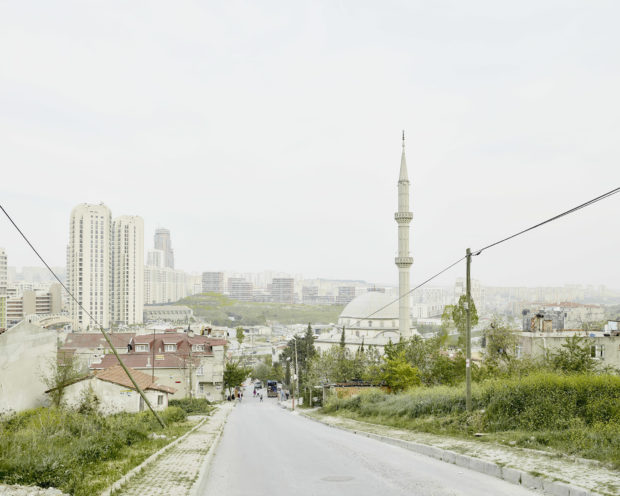Click on image opens gallery
Gated Istanbul
While our image of Istanbul is still determined by the city centre with its famous monuments such as Hagia Sophia, Topkapi, Sülemania, Blue Mosque and numerous other historical buildings, the image of the city changes abruptly as soon as you move a few streets away from the historically important places.
For decades the informal do-it-yourself construction, Gecekondu, was the basis for the development of the metropolis. The term Gecekondu means “built overnight” and describes illegal settlement construction, built on occupied land, which was the only chance of securing housing for millions of immigrants from rural areas. As a result, between the 1940s and 1980s, enormous areas around the historical centre of Istanbul were settled, which became the property of the inhabitants in the 1980s as a result of extensive amnesties. Without planning and control, equipped with makeshift infrastructure, urban expansion areas were created that still exist today and characterize the image of Istanbul in the 1960s. The settlers now make up half of Istanbul’s population in the second and third generations and represent an obstacle for the city and the now proclaimed urban renewal in many ways.
With the economic development of the last 25 years, a new middle class has emerged, which had higher purchasing power and also made higher demands on housing. At the same time, the political landscape began to change and with it the social changes that accompanied it. The emerging need for new housing was met by the state-owned TOKI as well as by private developers and investors, who developed and built residential complexes in the style of gated communities following the international model. After the first, smaller complexes, over time projects with several thousand apartments each were built on fenced off areas secured by private security.
This type of settlement has been known from the USA since the 1970s, similar developments have been built in South America, in North African cities, in Moscow to name just a few.
The promise of a safe, happy life in an environment designed according to simple clichés is common to all. The state housing authority TOKI plays an important role in the specific characteristics of Istanbul. It intervenes massively in the land market and is responsible for a vast number of projects. Its radical urban development policy pursues the goal of opening up Istanbul more to global capital and developing it into a geostrategically important business location. To date, more than a thousand such closed-off housing estates have been built, radically changing the cityscape and experience of the city. Numerous gecekondu have been demolished and the residents resettled.
A segregation process on several levels is emerging. The newly planned complexes show little consideration for the urban structure and surroundings. Maximum self-expression and demarcation is the leitmotif. Likewise, the development principle of an urban structure is significantly curtailed. There are only thoroughfares between the complexes, crossing the gated communities is not possible. The experience of a city as a fabric of diverse urban spaces and possibilities for movement is reduced to passing by. Only those who have the necessary access authorization can enter.
A similar process of urban renewal is now planned for some historical districts in the city centre. Supported by new laws for the restoration of historical buildings, existing “inferior” buildings in central old town areas (Talabasy, Fatih, etc.) – production facilities, low-budget accommodation for those working there, historical timber house settlements – are to be replaced by inner-city gated communities as street blocks with historicising facades. These cancel out the function of the block as we know it. The division of the street block into plots of land, whose development will be carried out by means of individual
houses built next to each other, each with its own access from the street side, represent the image of the old town as we know it in Europe. This is now to be replaced in parts by a development of the block closed to the street, which has only one or a few central entrances. The buildings are now accessed via the inner courtyard, which is only accessible to residents or authorised persons through private security-controlled entrances. The openness of the perimeter block development, which is already limited per se, is thus completely eliminated. The streets, decorated by scenery like facades, only have a mechanistic access function.
Istanbul does not correspond to our ideal of a pluralistic and socially just city for all. It has mastered the admission of millions of newcomers and the development of the gece condus with great ease. We observe the current urban renewal projects with scepticism and astonishment. The continuing immigration of refugees from poverty, war and civil war accelerates the aforementioned segregation processes and the occupation of urban areas as well as the emergence of ever new gated communities. For us, Istanbul remains a fascinating enigma.
























